States eligibile for below invoice pricing and 100% free delivery:
Alabama, Arkansas, Texas, Oklahoma, Florida, Georgia, Kentucky, Louisiana, Maryland, Delaware, Mississippi, North Carolina, South Carolina, Tennessee, Virginia, and West Virginia.

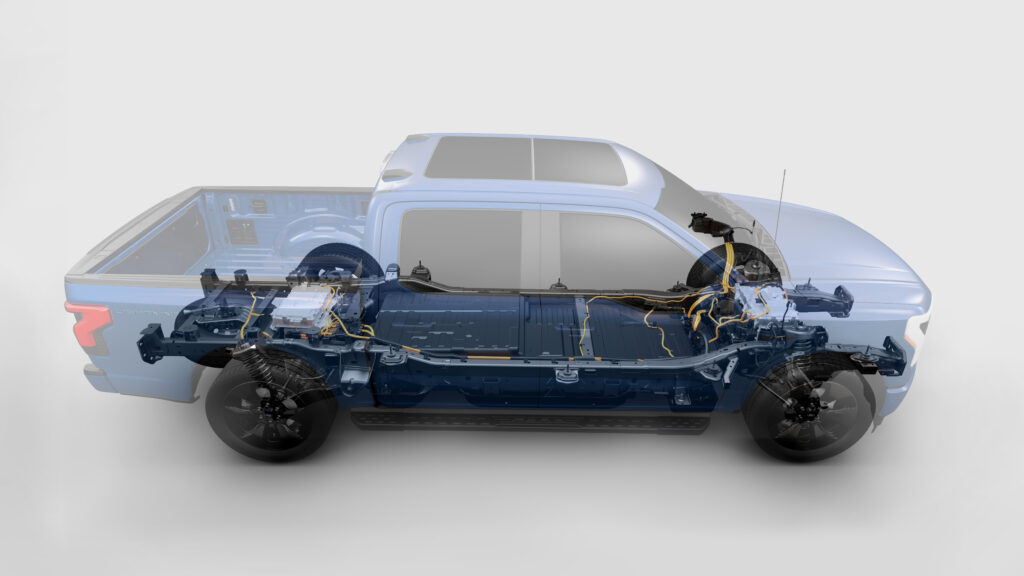
Finally, the world knows why Ford has yet to name an electric vehicle the ‘Model e.’ On March 2, Ford announced the formation of a distinct unit for electric vehicle operations. The decision paves the way for the automaker to accelerate EV development while opening new avenues for direct-to-consumer sales. Ford says they are driven by the need to compete and win against both new EV competitors and established automakers.
3/3/22 Update: Ford CEO and President Jim Farley explained the move and how it affects dealers.
“This is only about creating incredible products that improve over time. To create a better customer experience than yesterday. And ultimately, to win as a company. The reality is, our legacy organization has been holding us back. We had to change.”
Ford wants a certain number of dealers to opt in to a new Model e sales model. Model e dealers would not hold inventory. Instead, they will facilitate the delivery of online orders, much as Tesla does for their customers. Electric vehicles will be sold at non-negotiable prices. That’s just one step away from direct-to-consumer sales.
“Our message to dealers is, we’re betting on you. Get ready to specialize,” Farley said.
Ford’s announcement outlines the establishment of two new operational divisions that will remain under the corporate umbrella of Ford Motor Company. Ford Model e will take on the future of electric vehicle development and sales. Ford Blue will become Ford’s combustion-powered division, encompassing everything from the F-150 to the Bronco.
The two new divisions within Ford will continue to collaborate and propel the greater Ford enterprise forward, according to the press release detailing the plans. Ford Model e and Ford Blue will join Ford Pro as the corporation continues to branch out its business model. In 2021, Ford Pro was launched as a one-stop shop for commercial and government customers.
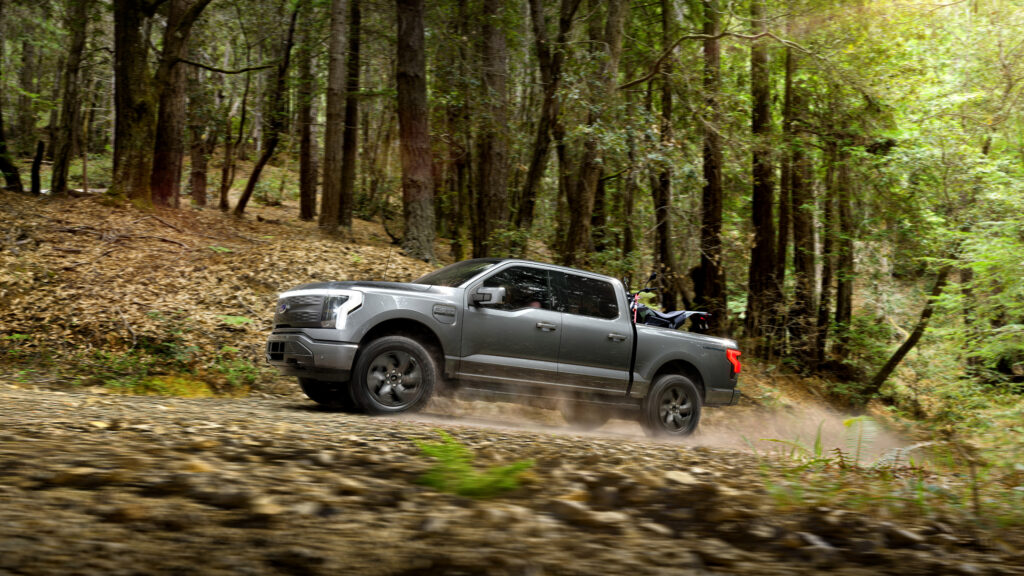
The creation of Ford Model e was driven by the success of the popular Ford Mustang Mach-e and the overflowing support for the upcoming F-150 Lightning. Interestingly, Ford cited the success of their dedicated EV division in China as another source of inspiration for the launch of Ford Model e.
Ford President and CEO Jim Farley will take on yet another role as President of Model e. Farley has long been an outspoken proponent of Ford’s ambitious electrification plans.
“Ford Model e will be Ford’s center of innovation and growth, a team of the world’s best software, electrical and automotive talent turned loose to create truly incredible electric vehicles and digital experiences for new generations of Ford customers,” Farley said.
Ford hopes that Model e will attract and retain the best engineers and software developers to Ford. As autonomous driving and wireless over-the-air updates become the norm, Ford wants to be a leader in the reimagined automotive industry that’s currently in the making. A lot more computers, and a lot less oil. They’re pushing full steam ahead with ground-up development of electric vehicles. EV platform design, battery research and development, electric motors and inverters and charging infrastructure will all fall under the umbrella of Ford Model e. There are also plans to advance recycling infrastructure in both cost-cutting and environmentally responsible ways.
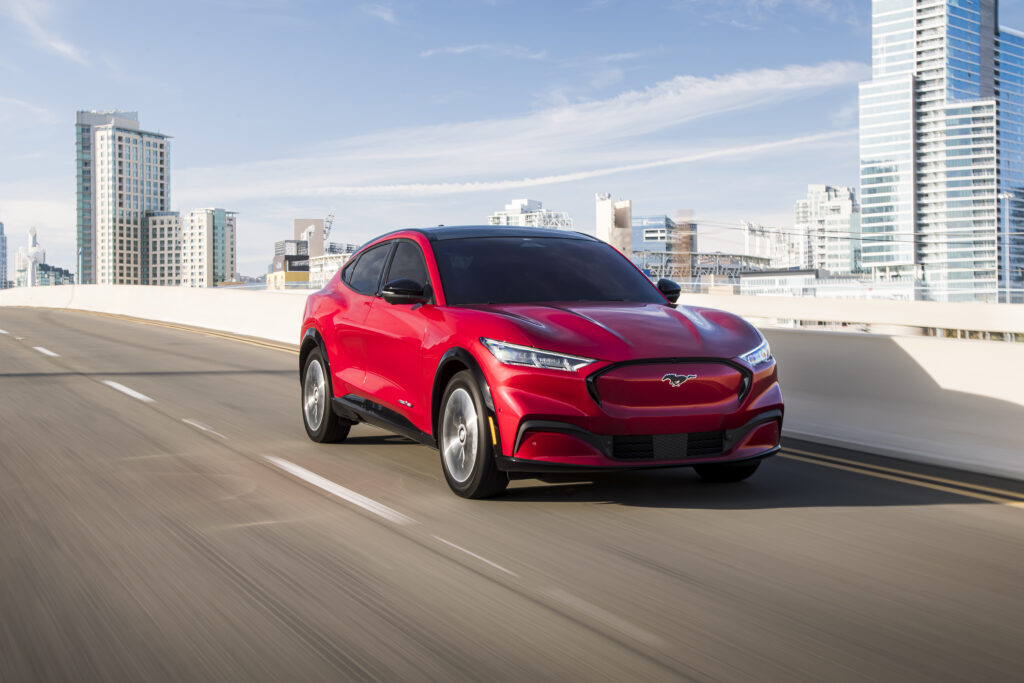
Ford not-so-subtly shared one of their larger ambitions for their new electric vehicle division: foregoing the dealership model. We’ve seen Ford’s corporate leadership speak out against outrageous dealer markups as the F-150 Lightning nears delivery. Ford’s announcement highlights the changes to their EV sales model:
“Ford Model e also will lead on creating an exciting new shopping, buying and ownership experience for its future electric vehicle customers that includes simple, intuitive e-commerce platforms, transparent pricing and personalized customer support from Ford ambassadors.”
Yeah, transparent pricing would be welcome. It’s great and almost shocking to see a legacy automaker making such a large pivot away from the status quo. Could the direct-to-consumer model win over new customers to the Ford brand?

CEO Jim Farley calls the Ford+ plan the company’s biggest opportunity for growth and value creation since Henry Ford scaled production of the Model T. Ford Blue will work to optimize Ford’s combustion-powered models and profitability through strengthened consumer relationships, quality improvements and greater operational efficiency.
“Ford Blue’s mission is to deliver a more profitable and vibrant ICE business, strengthen our successful and iconic vehicle families and earn greater loyalty by delivering incredible service and experiences. It’s about harnessing a century of hardware mastery to help build the future. This team will be hellbent on delivering leading quality, attacking waste in every corner of the business, maximizing cash flow and optimizing our industrial footprint.”
Ford CEO Jim Farley has long said that Tesla needs to be taken seriously. Tesla, Rivian, Lucid and newcomer Fisker are all having success with direct-to-consumer sales. However, these automakers and any others who go this route face a maze of state laws that present roadblocks for direct-to-consumer sales. The dealership lobby is strong in much of the United States. So much so that a recent West Virginia bill was introduced that would ban most over-the-air updates in the state, all so that dealerships can continue to rake in service center revenue.
Other automakers are in the weeds with the dealership model, too. Kia’s much-lauded EV6 electric crossover is facing opposition from Kia dealerships. They’re simply not adapting to the coming rush of electric vehicles. Jalopnik reported that EV6 buyers are reaching out to them with stories of dealers who are making buying an EV6 a lot harder than it should be.
Nationwide, 17 states currently have a ban on direct-to-consumer sales. Eleven more states have carved out specific exceptions for Tesla (and in some cases, other automakers that sell only EVs). That’s why Tesla technically can’t sell directly to consumers in states like Texas and Washington. It’s an antiquated system in need of change.

Ford recognizes the tides of change approaching automotive sales. Automotive News reported that efforts to permit direct-to-consumer sales have been introduced in 10 states. Several of the bills already failed. More are surely to come as electric vehicle market share surpasses 5% of new auto sales in America.
This is long overdue. Consumers are fed up with dealer markups, deceptive sales tactics and stressful experiences at the dealership. But this isn’t the end for dealerships. There will be a need for dealers for decades to come, even if sales shift away from their franchises.
Electric vehicles are coming, like it or not. Ford is aiming for annual production of more than 2 million EVs by 2026. They expect EVs to represent half of global volume by 2030. Automakers say that half a trillion dollars will go to electric vehicle development this decade. However, EVs currently can’t be serviced at the neighborhood repair shop, or in one’s home garage. Certified technicians certified in electric vehicle repair are quickly going to be in high demand at service centers everywhere. Dealership service centers aren’t going away. In fact, dealership service centers will likely see business grow as more consumers opt for electric vehicles.
Ford’s new Model e and Ford Blue divisions present a massive opportunity for new revenue streams and efficiency within Ford’s R&D and sales operations. Will other legacy automakers follow suit? Truthfully, they are very likely making plans as we speak. CarEdge will keep you up to date with consumer-focused automotive news. More change is surely to come.

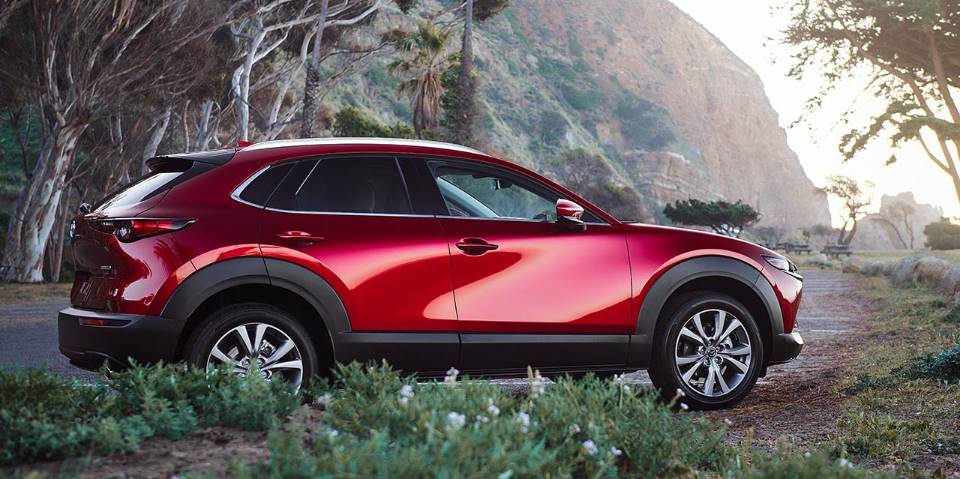
Every year, Consumer Reports sends dozens of car models through half a million miles of track testing and data collection. The non-profit organization buys all of its test cars anonymously from dealers and does not accept free samples from automakers. The Consumer Reports testing regimen includes more than 50 scientific tests on every vehicle it evaluates.
The respected organization combines their findings with survey data from their 6 million subscribers to publish their annual Consumer Reports brand rankings. The pinnacle of the Consumer Reports’ annual rankings is the overall scores tallied for each brand.
In 2022, Consumer Reports scored 32 automotive brands based on their overall scores in reliability, consumer satisfaction, road testing and safety. This year’s rankings bring surprising changes and a new leader.
Subaru climbed two spots to number one in the 2022 Consumer Reports brand rankings. The Japanese automaker known for standard all-wheel drive dethroned Mazda with an overall score of 81. The 2022 Subaru Forester has ranked among Consumer Reports’ top picks for the 9th consecutive year. Fascinatingly, six of the top 10 brands in 2022 are Japanese automakers: Subaru, Mazda, Honda, Lexus, Toyota and Infiniti.
The highest ranking American automakers in 2022 are Buick (72), Chrysler (71), and Dodge (67). Cadillac and Ford just barely passed the test, scoring 63 and 62 overall. Chrysler and Dodge have been known for reliability issues in the past, so it’s great to see them improving. Likewise, BMW’s luxury vehicles have long been known for their maintenance expenses, so to achieve #3 overall is a notable feat.
As more automakers make advanced safety features standard on their models, the weight of Consumer Reports’ safety scoring is separating the winners from the losers.
With Subaru now number one overall, Mazda falls to second place, followed by BMW, Honda, Lexus, Audi, Porsche, Mini, Toyota, and Infiniti. Here are the overall brand scores from Consumer Reports.
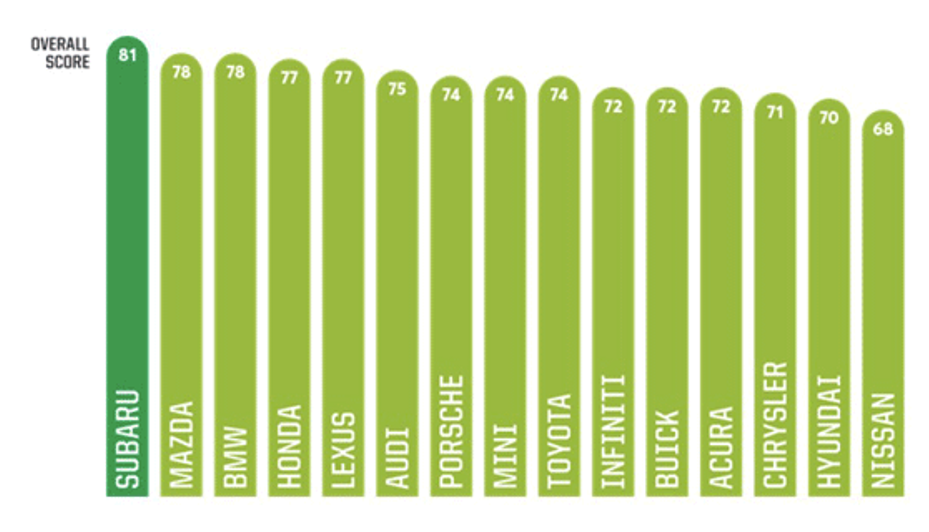
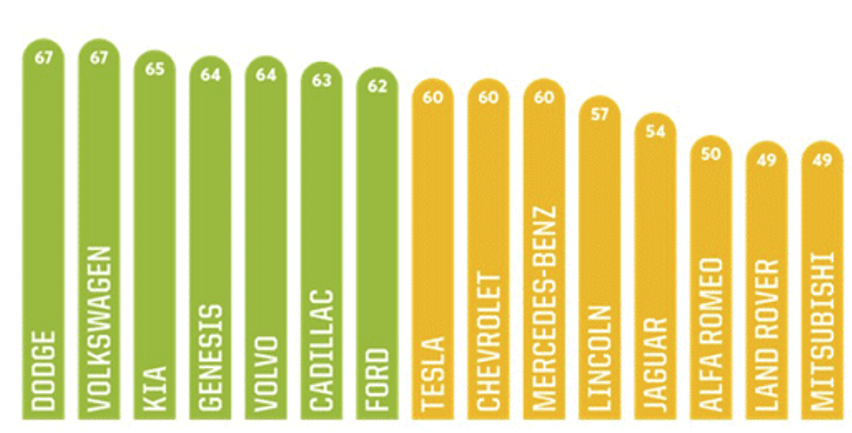
Tesla fell seven spots to #23 in Consumer Reports’ overall brand rankings. In a press release, Consumer Reports cited the so-called ‘yoke’ steering wheel in the refreshed Tesla Model X and Model S as causes for concern and consumer dissatisfaction. Jake Fisher of Consumer Reports told Automotive News that Tesla’s tendency to push the limits is partly to blame. “It dropped more than any other automaker, kind of due to their own decisions,” he said.

Everyone’s talking EVs, however Toyota’s hybrid powertrains remain the top-rated low-emissions choice at Consumer Reports. As part of their focus on low-emissions transportation, CR included the Green Choice designation for the second year. Toyota (9th overall) leads the Green Choice awards with 11 hybrid and plug-in hybrid models on the list.
What’s particularly interesting about this is the fact that Toyota has yet to release a single fully-electric vehicle. Their first, the 2023 Toyota bZ4X, is due to arrive later this year.
You can access the detailed 2022 Consumer Reports brand rankings with a membership to the non-profit.
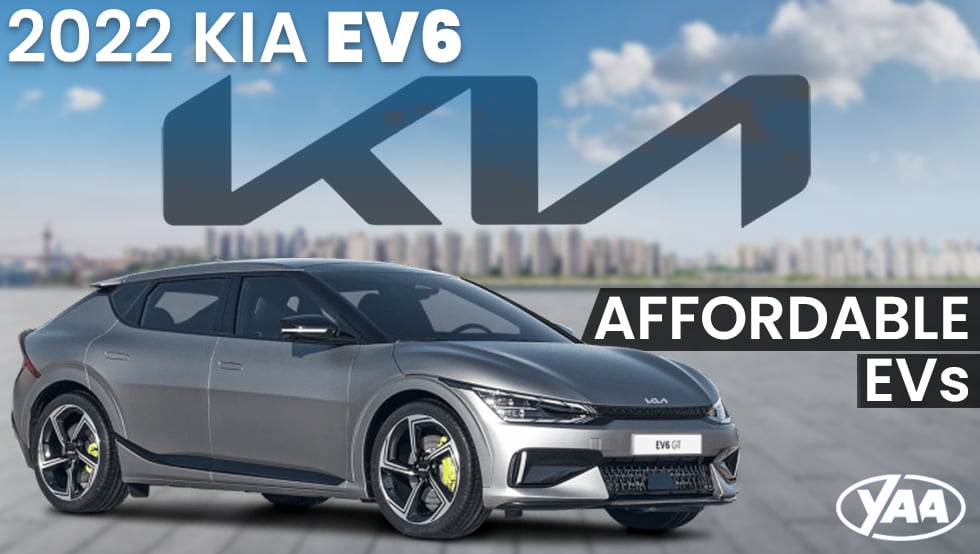
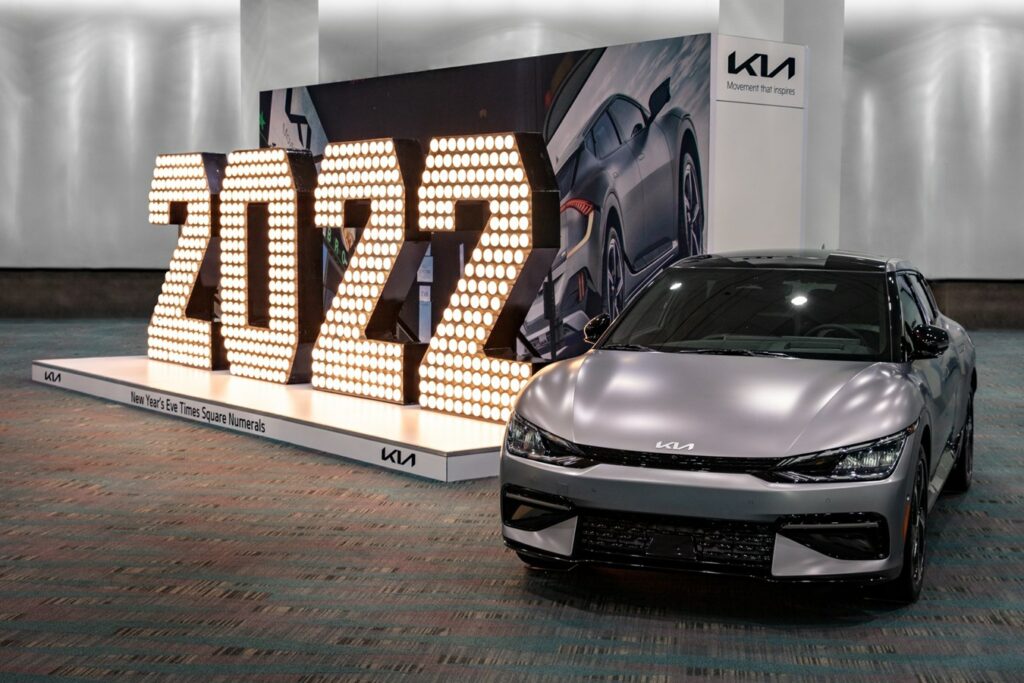
The average new vehicle sells for nearly $50,000, but not every vehicle costs the same to maintain and operate. Fuel economy, reliability, insurance, and maintenance needs are just some of the factors that determine the total cost of ownership for any vehicle. Automakers have made it clear that they’re bringing EVs to the masses, however cheap electric cars remain elusive.
Consumers in the market for an affordable vehicle in 2022 are presented with diverse options, including a larger selection of electric vehicles than ever before. EV‘s are no longer just for tech nerds. People who had never imagined themselves in an electric vehicle are making the switch simply for fuel savings.
However, it remains true that the majority of electric vehicles carry luxury price tags. It’s unlikely you’ll hear anyone say there are “cheap electric cars,” however there are affordable EVs. Here are five affordable electric vehicles that drivers love in 2022.
Starting at $40,760
240 – 260 miles of range
Learn more: CarEdge Review of the Volkswagen ID.4
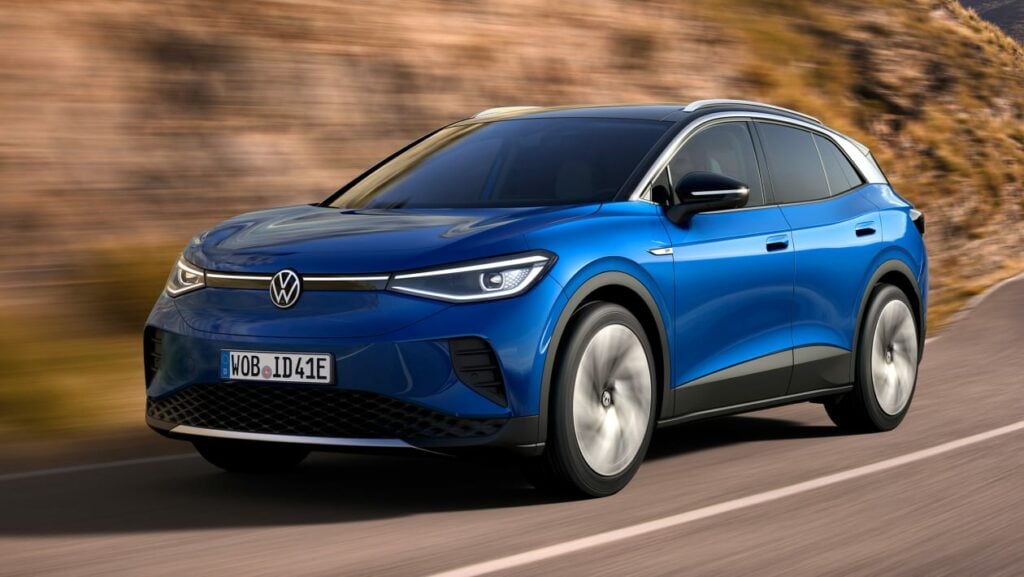
Pros:
Cons:
If you’re in the market for a great electric vehicle that will get you from A to B in comfort and confidence, the 2022 Volkswagen ID.4 should be on your short list. Capable performance, great safety ratings and a spacious cabin make the ID.4 a great place to be for the price point.
The 2022 ID.4 can go the distance, leaving range anxiety behind for the most part. Dozens of real-world range tests show that even on the highway at 70 mph, the ID.4 gets well over 200 miles on a charge. In city driving, closer to 300 miles is likely.
2022 updates are bringing bidirectional charging, plug-and-charge, increased range, quicker charging and major over-the-air updates to the ID.4. Even 2021 models will get new features via OTA updates this summer. Learn more about the game-changing capabilities of OTA updates here.
When it comes time to charge, you can either juice up at home overnight, or take advantage of 3 years of free Electrify America charging with unlimited miles. For frequent travelers, the Electrify America incentive can be worth a few thousand dollars. At a fast charger, charging to 80% takes about 30 minutes.
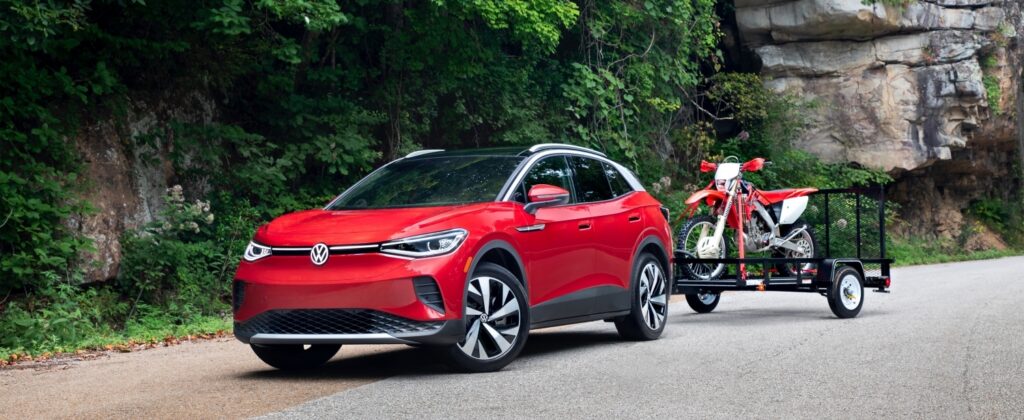
The all-wheel drive version of the ID.4 is where this crossover really shines. Adding another motor to the front axle increases horsepower to 295 with 339 lb-ft of torque and a very satisfying 0-60 time of just 5.4 seconds. However, it’s not quite a car you’d take to the track. The handling is well-tuned for attacking winding roads in inclement weather, although it maintains a more family-oriented demeanor.
The 2021 ID.4 earned a Top Safety Pick+ rating from the Insurance Institute for Highway Safety, and a five-star rating from the National Highway Traffic Safety Administration’s rigorous crash testing. CarEdge recently detailed all electric vehicle safety ratings in 2022.
The Volkswagen ID.4 is about as good as it gets for its use case. For the frugal-minded, It’s a particularly compelling car in the base Pro trim with rear-wheel drive (MSRP $40,760). Volkswagen’s EVs still qualify for the $7,500 federal EV tax credit in the US, which can turn the entry-level ID.4 into a $34,000 purchase. That’s an amazing value in today’s market.
Starting at $40,900
232 – 310 miles of range
Learn more: CarEdge Review of the Kia EV6
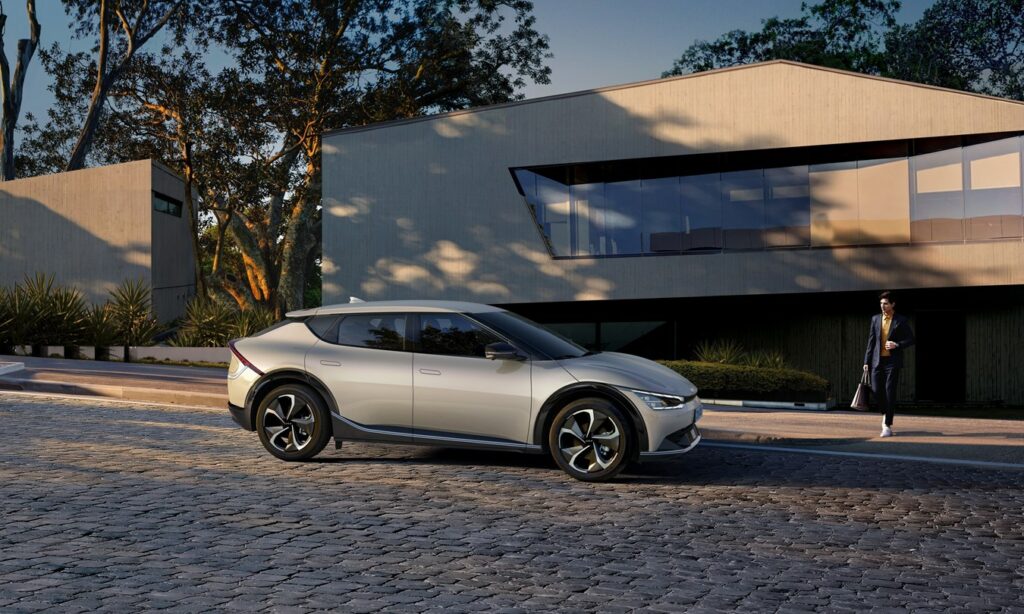
Pros:
Cons:
If you’re a techie who demands the latest and greatest that automakers have to offer, but don’t have the budget to buy an extravagant Lucid Air or Mercedes EQS, the Kia EV6 and its platform sibling the Hyundai IONIQ 5 just might be what you’re looking for.
Kia and Hyundai partnered up to engineer the new E-GMP battery and powertrain platform. The first two models to feature this advanced architecture are the Hyundai IONIQ 5 and the all-new Kia EV6. Both of these crossovers offer ultra-fast charging, impressive range, and over-the-air update capability for just over $40,000.
The 2022 Kia EV6 has a premium feel to it, and that’s something we’re still learning to expect from Kia. Aggressive looks on the outside are met with a welcoming, spacious interior. The cabin is open and airy.
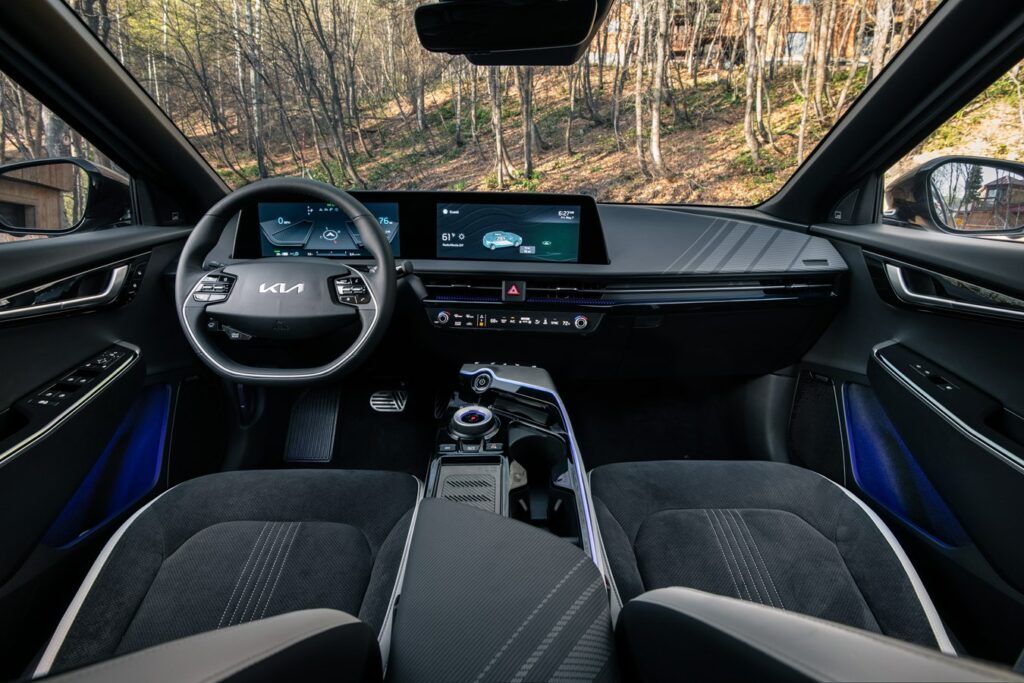
The EV6’s front dash consists of dual 12.3” screens, one for infotainment and another for the instrument cluster. Higher trims also include an augmented reality heads-up display that projects driving directions and basic info onto the windshield within the driver’s line of sight.
The Kia EV6 is no slouch; it can hustle with a heavy foot. All-wheel drive variants produce 313 hp and a 0-60 time of 5.1 seconds, but range drops to 274 miles on a charge. Longer range rear-wheel drive trims still reach 60 mph in just 7.3 seconds. For perspective, that’s about two seconds quicker than the popular Subaru Forester.
With a starting MSRP around $42,000 with destination, the 2022 EV6 represents incredible value for leading-edge tech. It even has faster charging and longer range than similarly priced Tesla models.
The greatest advantage the Kia EV6 has over any Tesla model is that the EV6 qualifies for the federal electric vehicle tax credit. Buyers can save up to $7,500 on their federal taxes if they purchase a Kia EV. Tesla and GM brands are no longer eligible since they’ve already sold greater than 200,000 electric cars.
If you’re a fan of the specs but not the aggressive looks, the Hyundai IONIQ 5 may be the perfect compromise.
Starting at $40,925
220 – 303 miles of range
Learn more: CarEdge Review of the Hyundai IONIQ 5
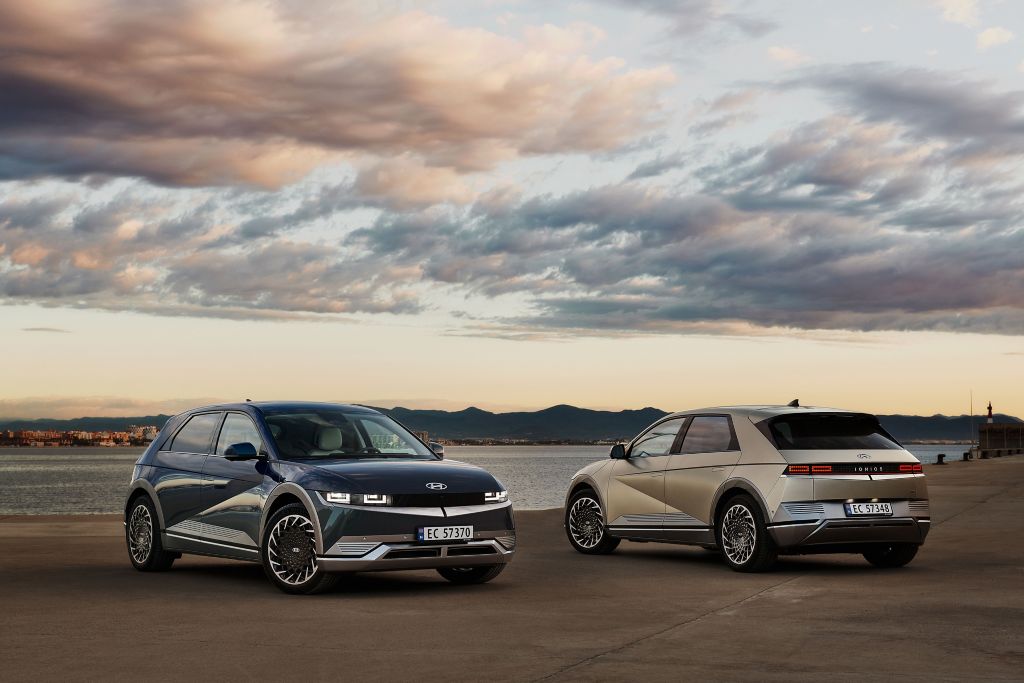
The IONIQ 5 made our CarEdge list of the 5 best cars to buy in 2022!
Pros:
Cons:
The all-new 2022 Hyundai IONIQ 5 is a uniquely retro electric crossover. You’re sure to get plenty of thumbs-ups at stoplights in this head-turner. It’s under $50,000, and surprisingly available at dealerships today. Hyundai says that the pixelated design draws inspiration from the first car they brought to America, the Hyundai Pony.
Also built on the new E-GMP platform, the Kia EV6’s sibling is as comfortable slamming into curves as it is cruising the interstate. The all-wheel drive variant is adequately powered with 320 horsepower and 446 lb-ft of torque. The AWD IONIQ 5 can get up and go with a 0-60 time of 5.2 seconds. That’s just a hair above the current electric crossover sales champion, the Tesla Model Y.
Range varies from 220 miles up to 303 miles depending on battery size and drivetrain. That’s slightly above average for a 2022 model. It’s important to note that some real-world highway range tests have struggled to get the IONIQ 5 past 200 miles on a charge.
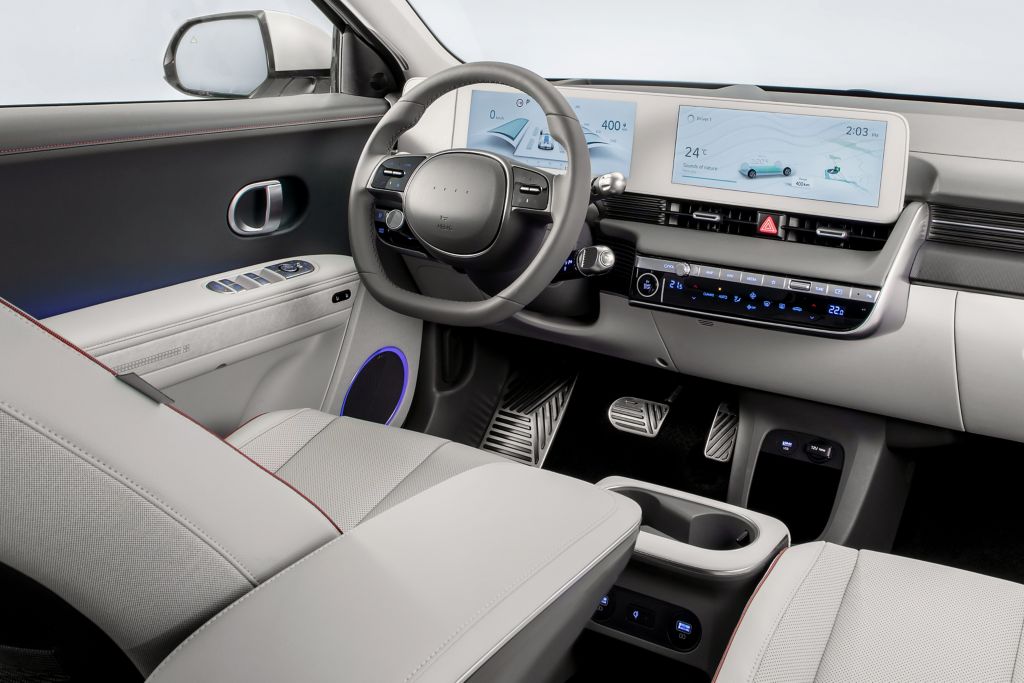
The IONIQ 5 does have one massive advantage over its competitors: charging speed. When you plug in at any Electrify America charging station, the IONIQ 5 can handle up to 230 kW charging speeds. Charging from 10% to 80% (adding 212 miles of range) takes just 18 minutes. The only other vehicle on the market capable of charging that fast is the $75,000+ Lucid Air luxury sedan. The IONIQ 5 has a major charging advantage over the ID.4 and Mustang Mach-E.
The IONIQ 5 is part crossover, part oversized hatchback. That’s not a bad thing. Somehow, Hyundai pulls off this delicate balance in all the right ways. The Ioniq 5’s interior volume (passenger and cargo combined) is 133.7 cubic feet, which is larger than the VW ID.4 and Ford Mustang Mach-E. The roominess has more in common with a Hyundai Santa Fe than a Kona.
Starting at just $40,925 for the 58 kWh smaller battery base model, the IONIQ 5 is available for thousands less than was expected. Most buyers will opt for the larger battery pack (77.4 kWh), which is comparable to other class competitors. With standard rear-wheel drive, the IONIQ 5 SE with the long range battery starts at $44,875. All-wheel drive is available for $3,500-3,900 more. The Limited trim starts at $51,825 and maxes out over $56,000 with all options included.
Starting at $44,990
272 miles of range
Learn more: CarEdge Review of the Tesla Model 3
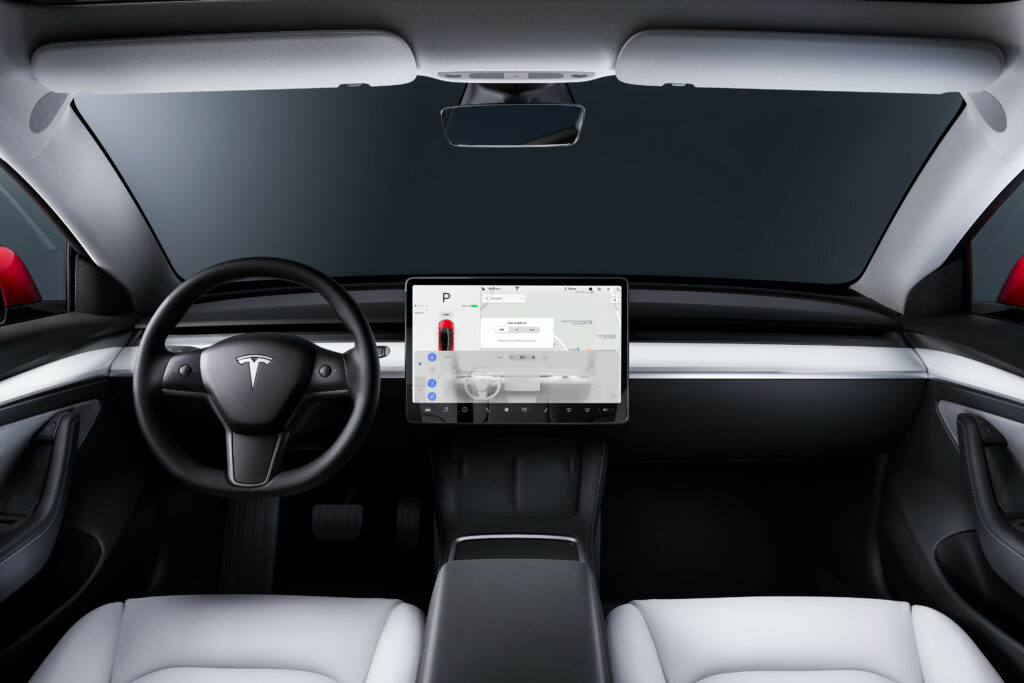
Pros:
Cons:
Say hello to the only Tesla available for less than $50,000. In reality, the 2022 Rear-Wheel Drive Model 3 is the same car as the ‘Standard Range Plus’ variant that the American automaker sold until 2021. Perhaps calling something ‘standard’ just wasn’t on-brand for the luxury automaker.
Don’t get your hopes up if you’re thinking you can get access to Tesla’s Full Self-Driving for under 50 grand. Tesla now charges $12,000 for FSD, which would bring the 2022 Rear-Wheel Drive Model 3 closer to $60,000 after taxes and fees.
Find out everything you need to know about self-driving cars in our CarEdge guide to autonomous vehicles.
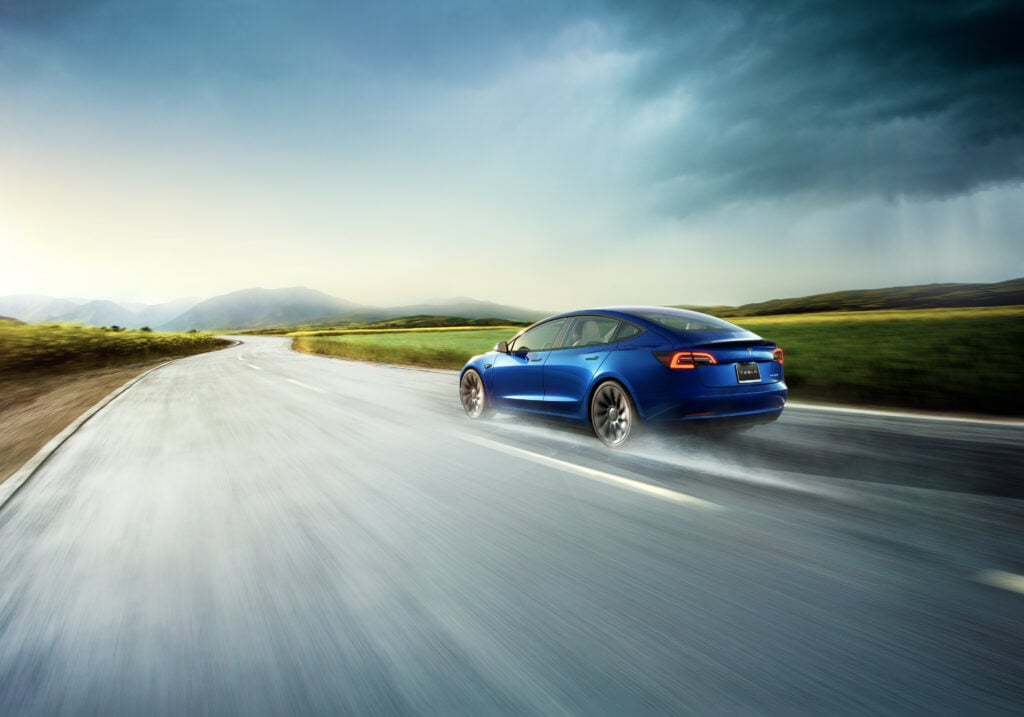
This base trim has received some 2022 upgrades, most notably an increase in range from 262 miles to 272 miles on a charge with the included 18” aero wheels. The 2022 Rear-Wheel Drive Model 3 features new lithium iron phosphate (LFP) batteries which will allow the car to repeatedly charge to 100% without risking as much harm to the life of the battery.
The Rear-Wheel Drive Model 3 is powered by a single electric motor that produces 296 hp and 277 pound-feet of torque. This sedan powers to 60 mph in just 5.8 seconds, not bad for a base trim.
At a Tesla Supercharger, its 60 kWh battery pack can accept up to 170 kW when nearly empty. In the real world, that means charging from 10-80% (adding 190 miles of range) takes about 26 minutes.
The 2022 Tesla Model 3 Rear-Wheel Drive now sells for a notoriously non-negotiable $44,990, plus the $1,200 destination and doc fee. So the cheapest Tesla is now $46,190. Just a year ago, it was $38,190.
Starting at $34,000
258 miles of range
Search hundreds of Hyundai Kona EVs for sale today at CarEdge Car Search!
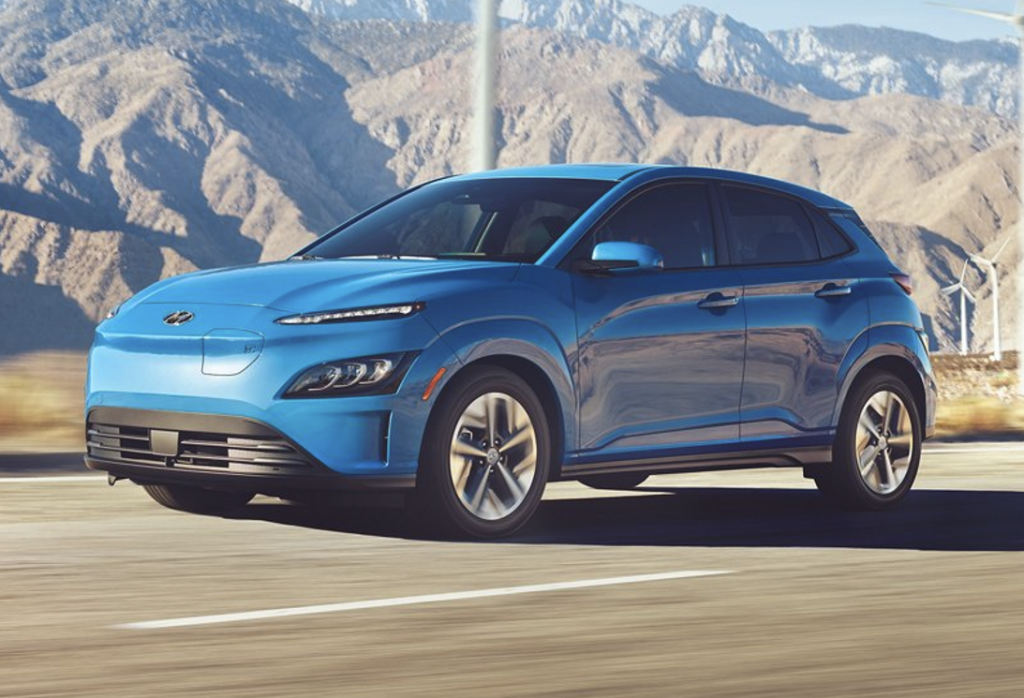
Pros:
Cons:
Hyundai’s forgotten electric vehicle should not be overlooked by those in search of a very affordable entry into electric mobility. The 2022 Hyundai Kona EV may not look all that attractive, but it has decent range and room to fit most lifestyles.
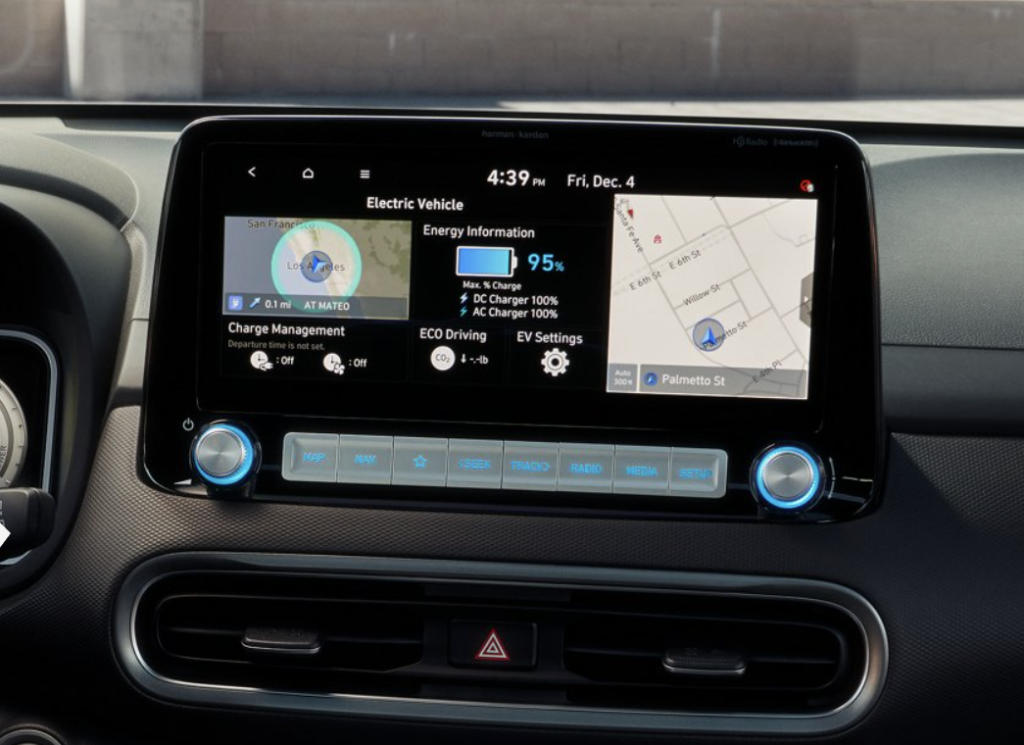
For just $34,000 before incentives, you can become the owner of the original Hyundai EV. This front-wheel drive subcompact crossover gets 258 miles on the charge, exceptional range for a budget EV. Some owners get over 275 miles on a single charge. The Limited trim, top-of-the-line option comes in at $42,500.
If you plug in at home, charging to 100% from a 240-volt dryer outlet will only take you about 9 hours from 10% state of charge. That will get you a full battery overnight while you’re sleeping. At a DC fast charger, the Kona is behind the competition. In 47 minutes, the Kona Electric charges from 10% to 80% capacity.
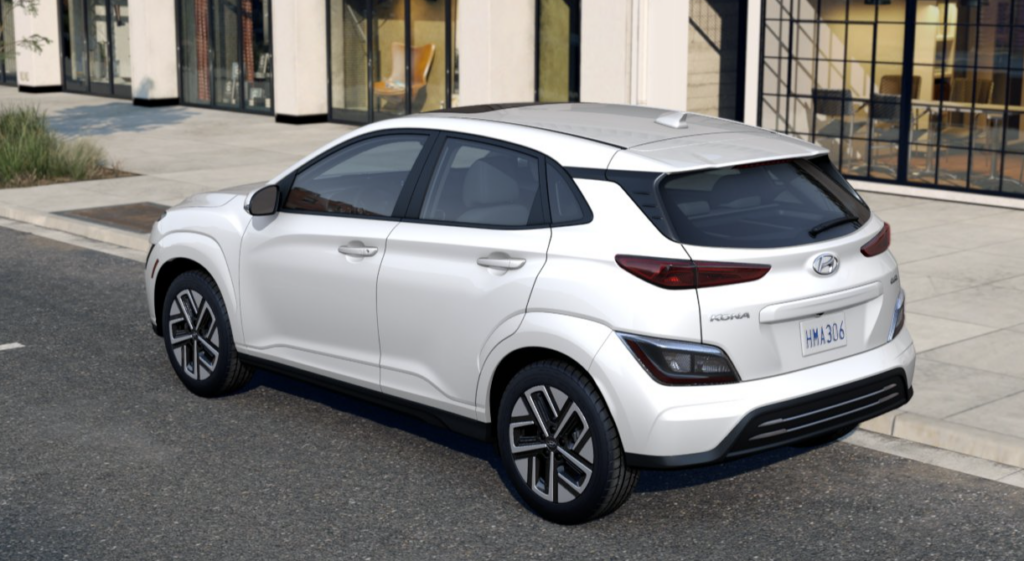
If you’re more of a Kia lover, we have great news. The Kia e-Niro is basically the Kona Electric with a Kia face.
Due to the Kona Electric’s charging faults, this would not be a great road-tripping vehicle. But if you’re looking for cheap electric cars perfect for zipping around town, this is a great deal not to be overlooked.
Available in 2023, but you can reserve one now.
Learn More: CarEdge review of the Fisker Ocean
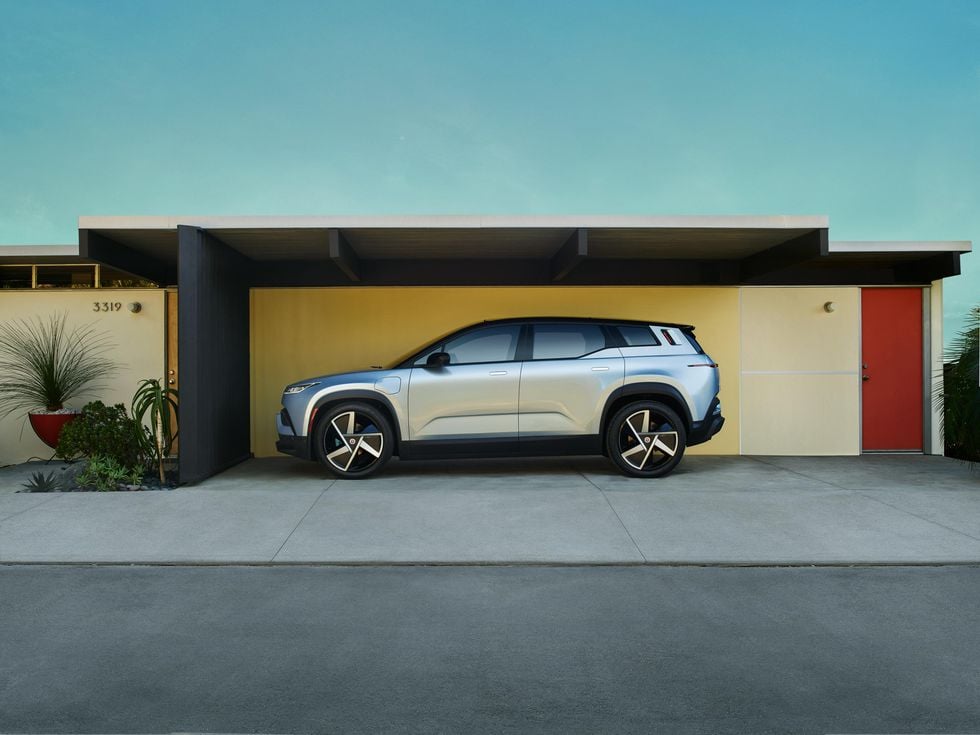
The Fisker Ocean sure does promise a lot. Will it deliver? At just $37,000, Fisker’s all-electric brand quotes 250 miles of range for the entry-level Fisker Ocean crossover. The 2023 Fisker Ocean didn’t make our official list for a few reasons. It hasn’t been produced yet, and delays have pushed the start of production back to November 2022. Fisker says they have 32,000 reservations in the books, so if you’re looking to buy one, it may not be possible until mid-2023. Furthermore, the more capable and sporty Fisker Ocean trims start at $50,000.
You may be wondering where the Chevrolet Bolt and Nissan Leaf are on this list of cheap electric cars. The Leaf is one of the originators of the EV segment, having started it all back in 2011. However, Nissan has regrettably not invested in range or battery performance upgrades over the years. It’s failing to keep up with the growing competition.
The 2022 Nissan Leaf S gets just 149 miles of range and charges quite slowly at between 50 and 100 kilowatts at a fast charger. It is the MOST affordable electric vehicle, with prices ranging from $27,400 to $37,400, however we can’t recommend an EV that leaves the lot at a disadvantage. As electric vehicles come to market with 250 to 400 mile ranges, how will the Leaf retain any resale value?
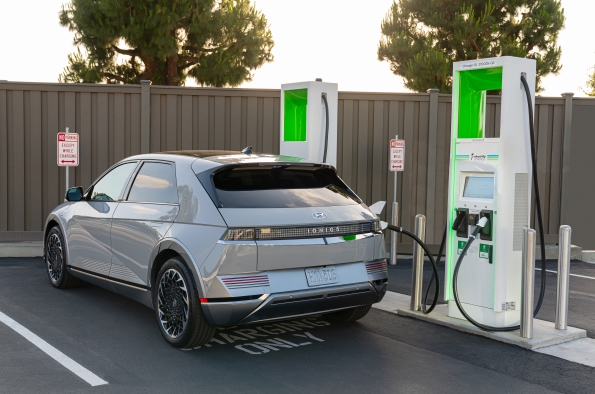
And then there’s the Chevrolet Bolt. It’s affordable and even looks okay with the recent facelift. While it’s true that the recall fix is giving Bolts brand-new, modernized battery packs, the reliability of the Bolt has taken such a hit that it’s too great of a financial risk for today’s consumers to get behind the wheel worry-free. You don’t want your $31,000 purchase to be a symbol of unprecedented fire risk. What would it take to change my mind? At this point, a few years of problem-free driving. Until then stay away from the Chevrolet Bolt. As you can see, there are plenty of other affordable electric vehicles out there in 2022.
Follow the money. Automakers are going all-in on electric vehicles in 2022 and beyond. The consumer benefits as competition rises, so perhaps affordable EVs are here to stay. If you’re looking to go electric in 2022, you don’t have to buy a Tesla, Nissan Leaf or Chevy Bolt. Every automaker is racing to become the next big thing in the world of EVs.
Some parting advice: consider all options, and test drive as many electric vehicles as you can. You’ll be amazed at what’s out there, and even more amazed at what’s to come.

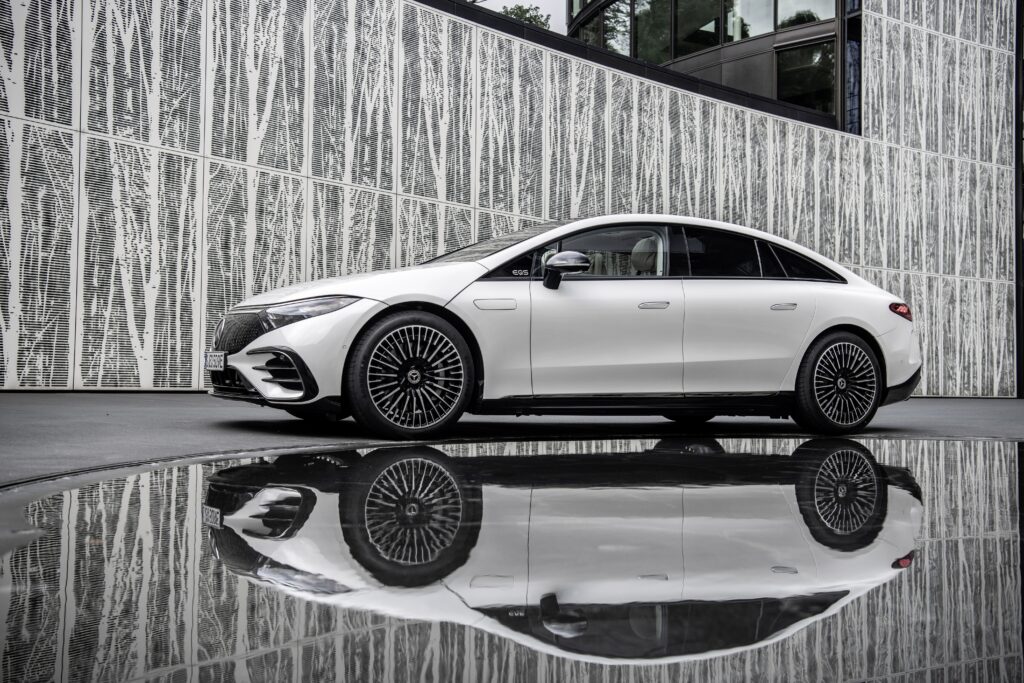
Tesla can’t be the best at everything. The world’s leading electric vehicle manufacturer arguably has the best technology integration, an impressive global charging network, and some of the best range out there. However, Tesla’s luxury competitors seem to have found its weaknesses.
It’s hard not to compare every electric vehicle to Tesla. Considering their lead in the EV segment, it would be irresponsible not to. The 2022 Mercedes EQS is an example of what’s possible when legacy automakers take EVs seriously. Is it a real contender that big wallets should consider? If the EQS is a sign of things to come from Mercedes, luxury aficionados have a lot to look forward to.
Beauty is in the eye of the beholder, right? The 2022 Mercedes-Benz EQS is not the prettiest luxury sedan. In fact, many think it’s outright ugly. CarEdge’s Zach Sheska says the EQS looks like a dolphin, and nothing will change his mind. Here’s the thing: it looks like a dolphin for a reason!
What are dolphins good at? Maneuvering through the water effortlessly. The Mercedes EQS’ blunt-nosed looks are the product of German engineers’ efforts to streamline the shape of the vehicle. No matter what you think about the looks, it worked. The EQS has the lowest drag coefficient of any production vehicle in history at just 0.20. The EQS slices through the air with less resistance than any other car you can buy. The results? A silent ride and excellent range.
The question remains, will luxury buyers fork over $100,000 for a Mercedes that looks like this?
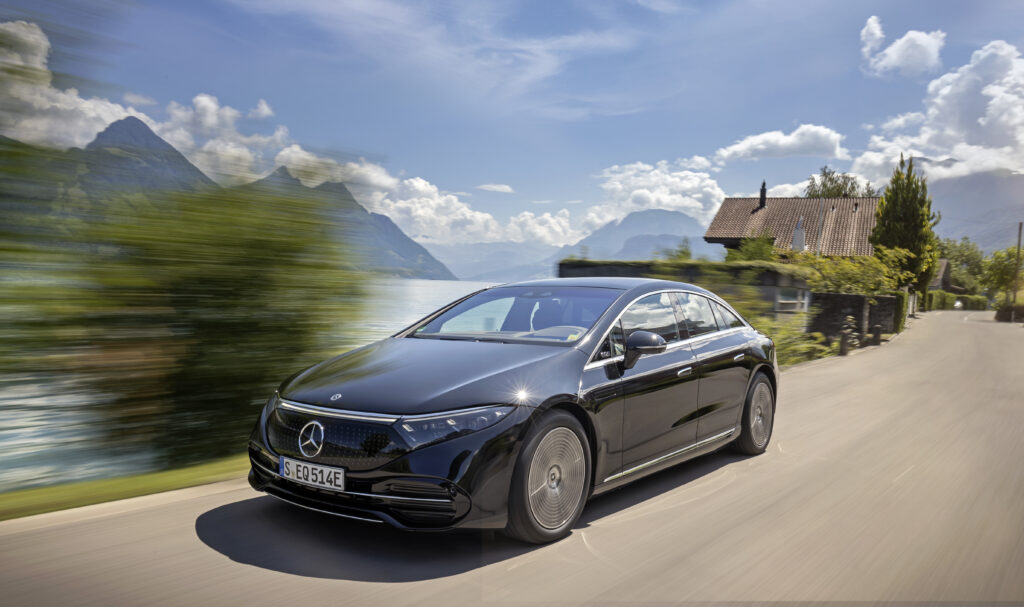
Other than the overall shape, nothing about the EQS’ exterior is particularly eye-catching. It’s a long car, at just over 207 inches. The length adds to the teardrop look of the car (it’s all about efficiency!) Yet, it doesn’t quite look like any other Mercedes-Benz. Subtle light bars in both the front and rear accent the EQS with a touch of modernity that most Mercedes models dare not approach.
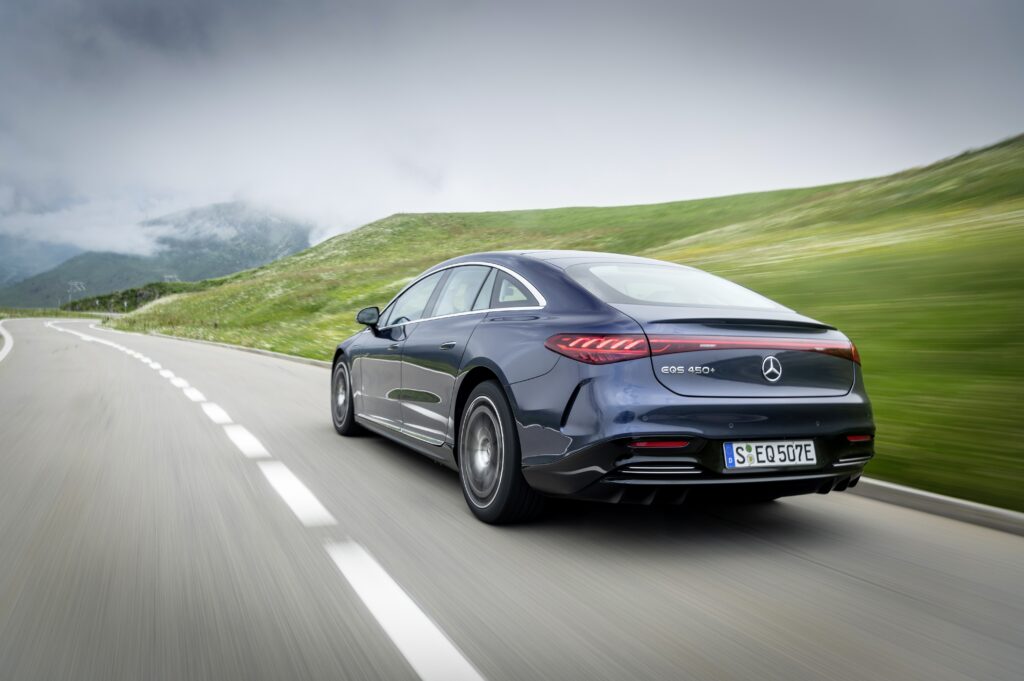
Just about the only thing the EQS has in common with the revered S-class is the general price range over $100,000. Buyers who tend to go for tradition rather than innovation will likely choose the latter. The differences don’t end on the exterior.
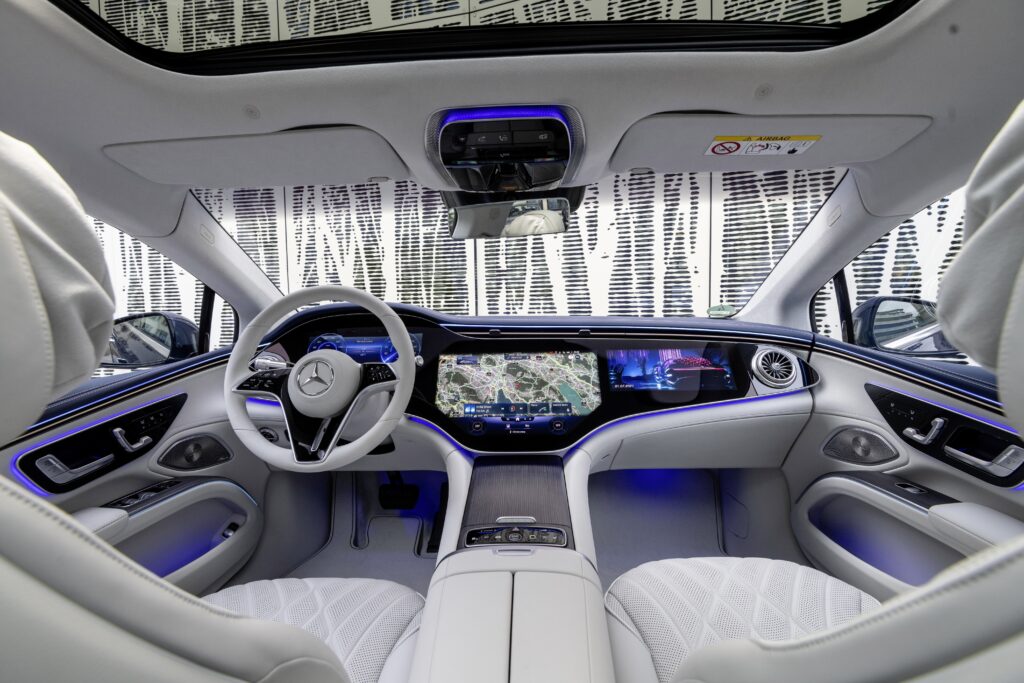
Mercedes-Benz says it tasked their engineers and interior designers with the mission of rethinking what’s possible in a luxury interior. They wanted a completely new approach, unlike anything that had been seen before. Today, Mercedes considers the result a unique pairing of avant-garde and tradition. It’s where tranquility and interactivity come together. Is it enough to make up for how it looks on the outside?
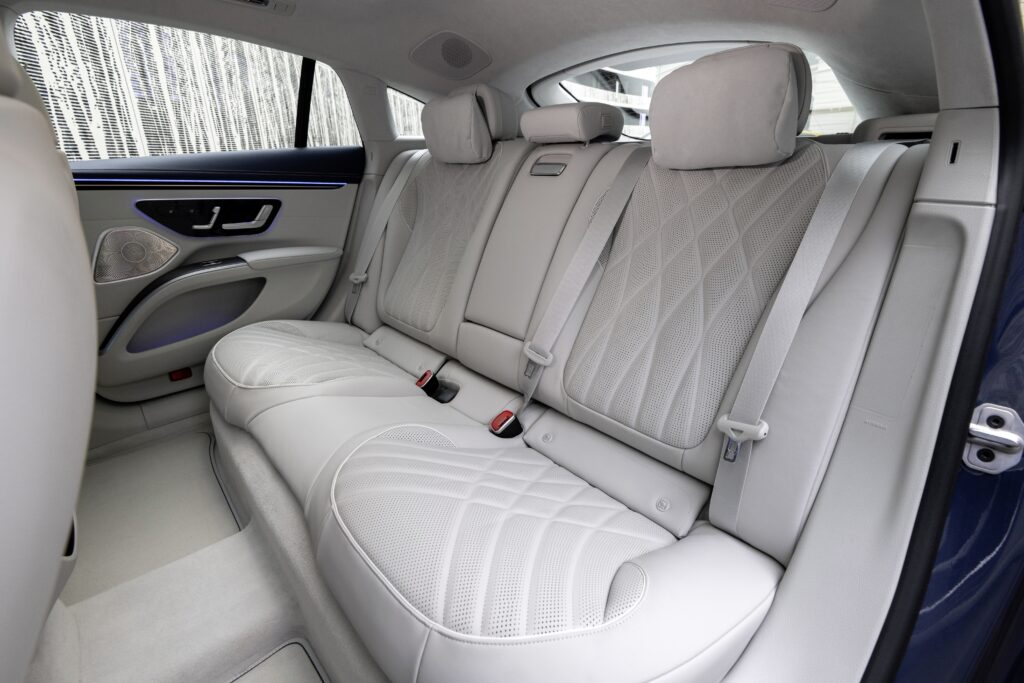
Mercedes has not announced the official cabin volume, but we can see from the generous headroom (40.4 inches) and legroom (41.7 inches) that the EQS is a large sedan.
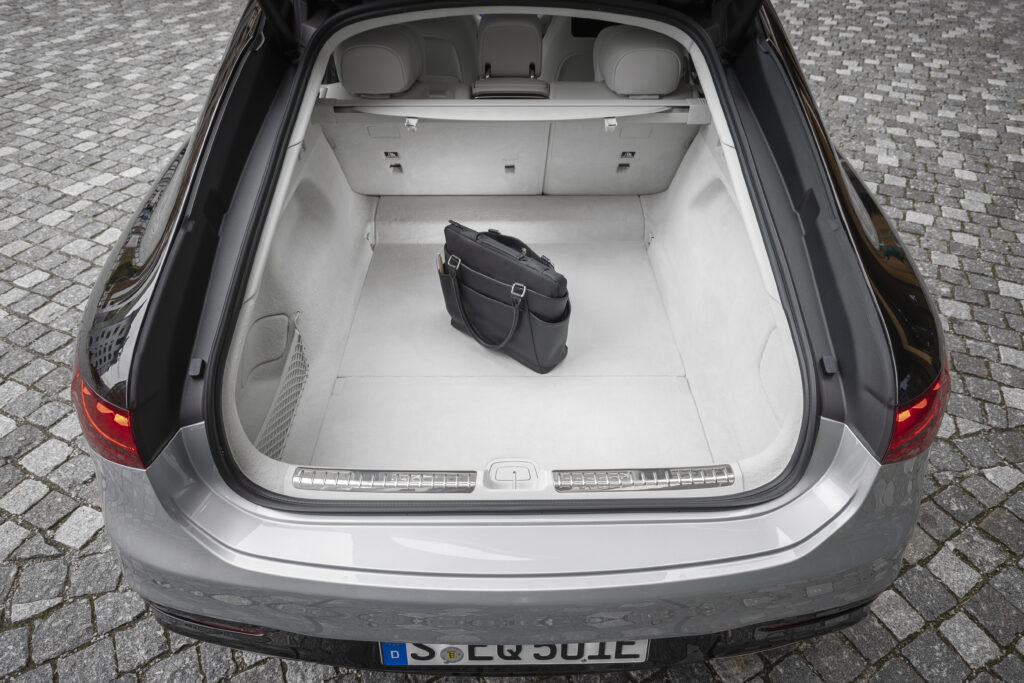
The EQS has 22 cubic feet of cargo space behind the rear seats, accessible via a hatchback-like trunk. With the seats folded down, this sedan-turned-hatchback opens up to 63 cubic feet of cargo space.
Stepping into the EQS, eyes are immediately drawn to the 56 inch Hyperscreen that wraps from the gauge cluster all the way to the passenger door. The EQS Hyperscreen is essentially three screens built into one seamless panel. There’s a digital gauge cluster, a vertical center screen for navigation, comfort controls, and entertainment and something Tesla certainly doesn’t have: a passenger screen. The EQS passenger screen is such a game-changer that I suspect Tesla will bring a passenger screen to the Model S and Model X in response.
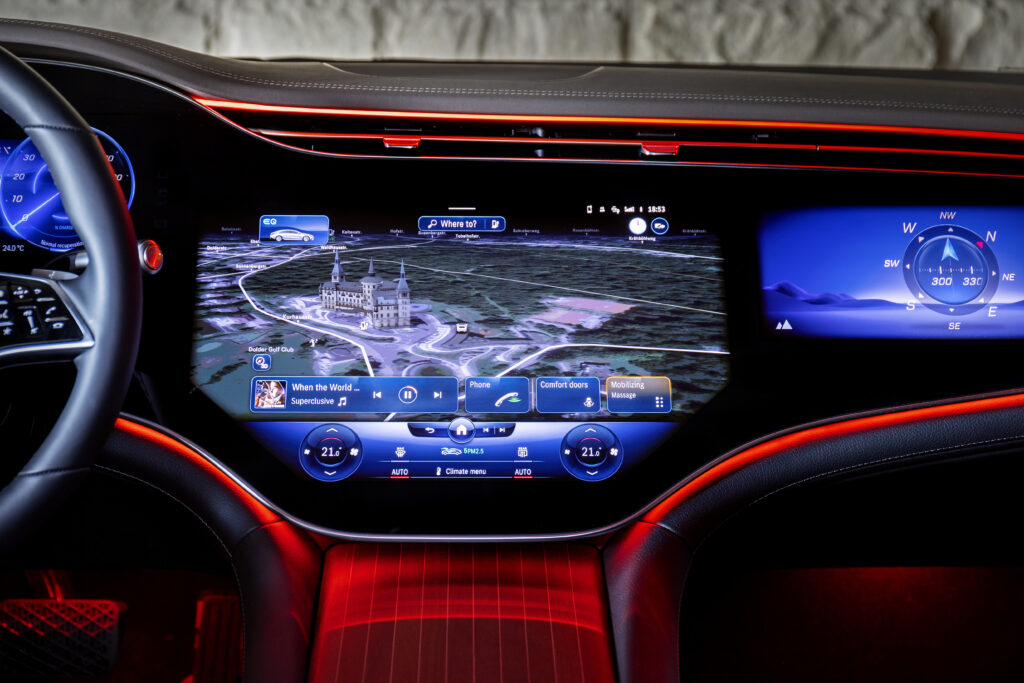
Passengers in the EQS have the freedom to do almost everything that the driver can do. Using the EQS passenger screen, you can make phone calls, adjust seating comfort, climate control settings, access endless entertainment and even vehicle navigation. In the EQS, the front passenger can be a real co-pilot!
Speaking of aviation, the EQS has an excellent heads up display. It’s more functional than the ones you’ll find in most vehicles. In the EQS, the heads-up display does not only indicate speed and highway signage. Arrows guide the driver through navigation in real time, and Level 2 driver assistance visualizes following distance with radar-like precision.
Ambient lighting accents are well placed throughout the front and rear cabin. Mercedes has given the EQS customizable ‘sound experiences’ to replace the traditional rumble of combustion. In the center console is a fingerprint reader. This device recognizes who is in the car and adjusts seating position and other features accordingly.
If you’re a fan of Tesla’s ‘Easter eggs’, you’ll be happy to learn that Mercedes includes what they call ‘graphical goodies’ in the EQS. Holiday and seasonal themes adorn the infotainment with quirky little nuances that add character to the silence of the EV.
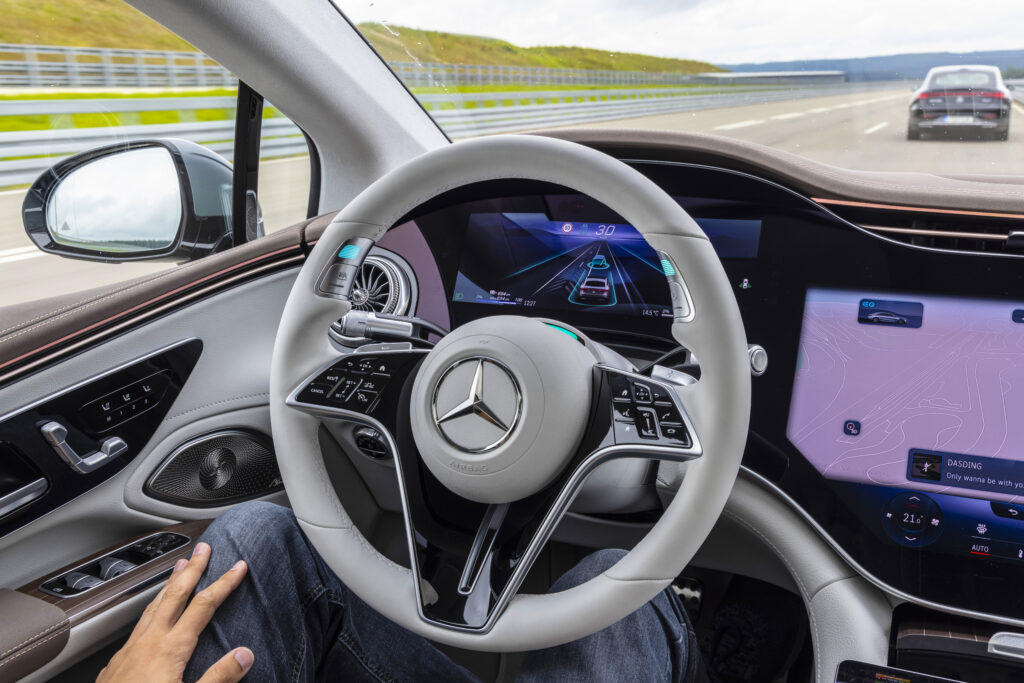
The MBUX infotainment technology shines as a responsive and user-friendly navigation system and access point for vehicle controls and entertainment. A 360-degree camera system provides assistance with parking, and doubles as your security monitor. Yup, just like Tesla Sentry Mode.
The Mercedes EQS is data-heavy. Accessible via the center screen is real-time power distribution data that shows exactly how much electricity is being consumed by each part of the vehicle. Sure, it’s basically the same display we see in the $45,000 Hyundai IONIQ 5, but it’s still great to have.
Mercedes is pioneering Level 2 and Level 3 advanced driver assistance on a path to eventual autonomy. On select German roads, the EQS can maneuver in traffic at speeds up to 38 mph. Eventually, Mercedes’ Level 3 driver assistance may be available in North America.
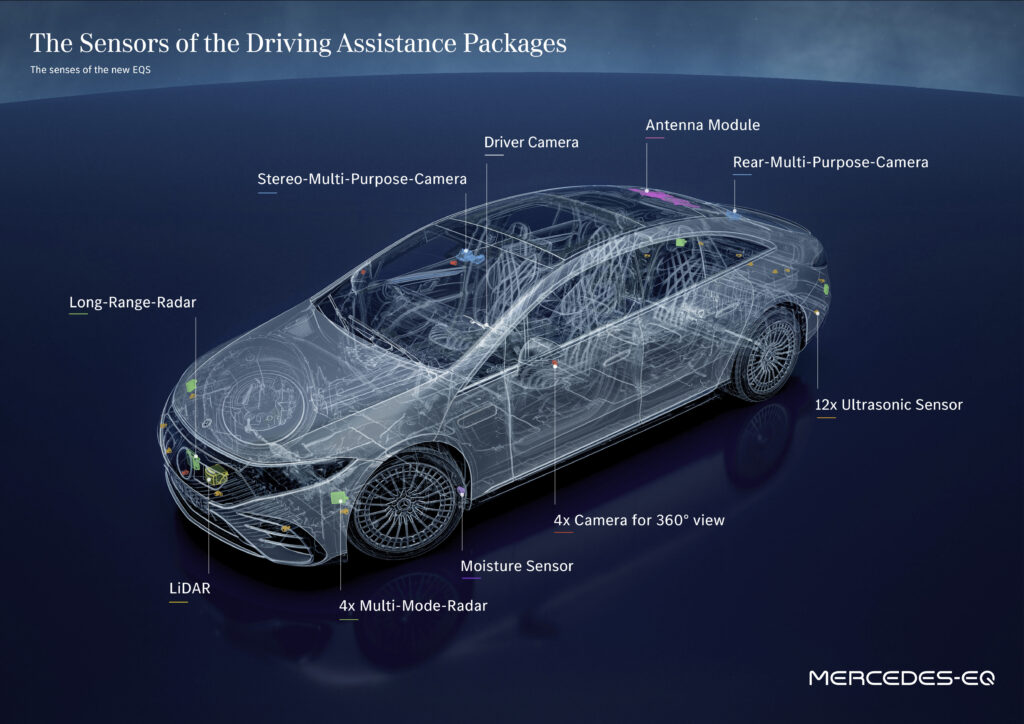
The entry-level Mercedes EQS 450+ starts at $103,360. It’s properly-equipped for the price point, but lacks the Hyperscreen found in higher trims. The EQS 450+ tops out at $109,560 for the Pinnacle trim. The EQS 580 Premium picks up at $120,105, adding another motor, 187 more horsepower and a step up in luxury. A top-of-the-line EQS 580 Pinnacle costs $126,360, but a fully-loaded car goes even higher.
Here are the trim and pricing details for the 2022 Mercedes EQS:

According to the United States EPA, the 2022 Mercedes EQS 450+ is rated for 350 miles of range. Edmunds found that the EQS can make it 422 miles on their test track, making it the new all time range l in their testing. Although the Tesla Model S Long Range is rated for just over four hundred miles, real world mileage tends to be a tad lower. Only the brand-new 2022 Lucid Air has a longer range.
Powering the EQS is a 107.8 kWh lithium-ion battery pack supplied by CATL. Mercedes advertises up to 200 kW charge rates at DC fast chargers. Early tests show that the charging curve is pretty good, making it possible to charge from 10 to 80% in just 28 minutes. A deep-dive analysis by InsideEVs found that the average charge rate during a session is 155 kW, which is exceptional.
Over 80% of charging is done at home, and the EQS is behind the competition in this regard. Add a level to 240-volt charger at home, the eqs can only accept up to 9.6 KW. That means it will take around 11 hours to fill the battery from an empty charge. Keep in mind that charging is typically done overnight while you sleep and the battery is rarely drained to 0%, so this is not likely to be a problem for most drivers. You always have the option of plugging in at a public DC fast charger if you’re in a hurry.
The EQS 450+ features a rear-wheel drive electric motor that generates 329 horsepower and 406 lb-feet of torque. Stepping up to the EQS 580 4Matic, the car gets an electric motor on each axle, and a lot more power. The EQS 580 has a total output of 516 HP and 611 lb-feet of torque. The car weighs nearly 6,000 pounds, so the power isn’t as jaw-dropping as it sounds.
Mercedes estimates the rear-drive variant will accelerate from zero to 60 mph in 5.5 seconds. The dual-motor EQS 580 4Matic drops the zero-to-60-mph time to 4.1 seconds. A Tesla Model S is two seconds quicker, but do you really need that much power?
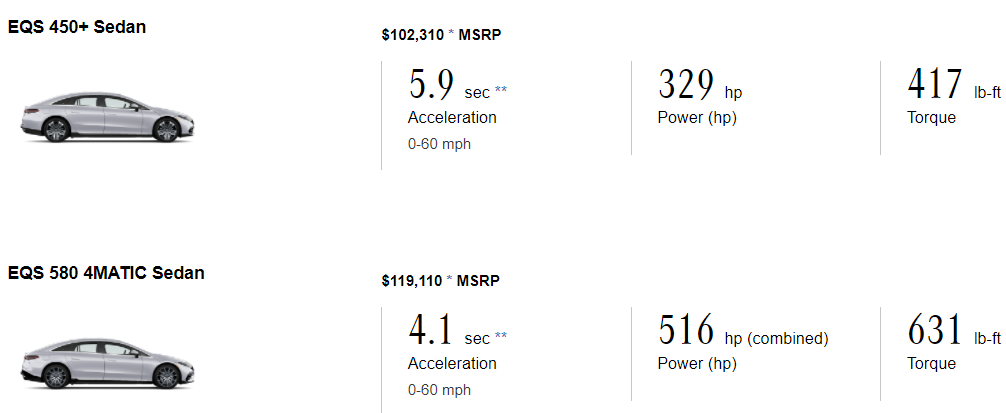
Handling is more forgiving with a softer ride than you’ll find in a Tesla. To most Mercedes buyers, that’s a good thing. The firm ride is not desirable to most Mercedes customers. The EQS is a car built for cruising, not for the track. An adaptive air suspension ensures that passengers are in for a silent and smooth ride.
The buying process is pretty simple for the 2022 Mercedes-Benz EQS, if you can find one. Mercedes lets you build and configure the EQS on their website, but if you’re looking to buy, you will have to go through a Mercedes dealership. The automaker advises potential buyers that the ongoing chip shortage is limiting various supplies and impacting pricing. Make sure you are prepared with car buying know-how before you walk into a dealership.
A few used Mercedes EQS’ are already available in some parts of the country. Don’t forget that you can check out new and used vehicle listings as well as auto industry insights at the CarEdge Car Search. It’s more than your average vehicle listing service. CarEdge Car Search was made to give the consumer the upper hand when buying a vehicle.
Unfortunately, you don’t always get what you pay for. True value is hit-or-miss in today’s automotive market, whether you’re looking for a budget vehicle or a luxury sedan. Even Tesla’s are sometimes delivered with shocking quality control faults. The 2022 Mercedes-Benz EQS does have a luxury price tag, but buyers of this spaceship-like electric vehicle are getting their money’s worth and then some.
On the other hand, Mercedes and the other German luxury brands are late to the EV game. Tesla sold nearly 1 million Vehicles last year, and they’re opening two additional factories in 2022. Will the Mercedes EQS be a force to be reckoned with? Or will it sell in limited volume as Tesla continues to dominate? We’d love to hear from luxury vehicle customers. What’s your take on what Mercedes-Benz is offering with the 2022 EQS luxury electric vehicle?
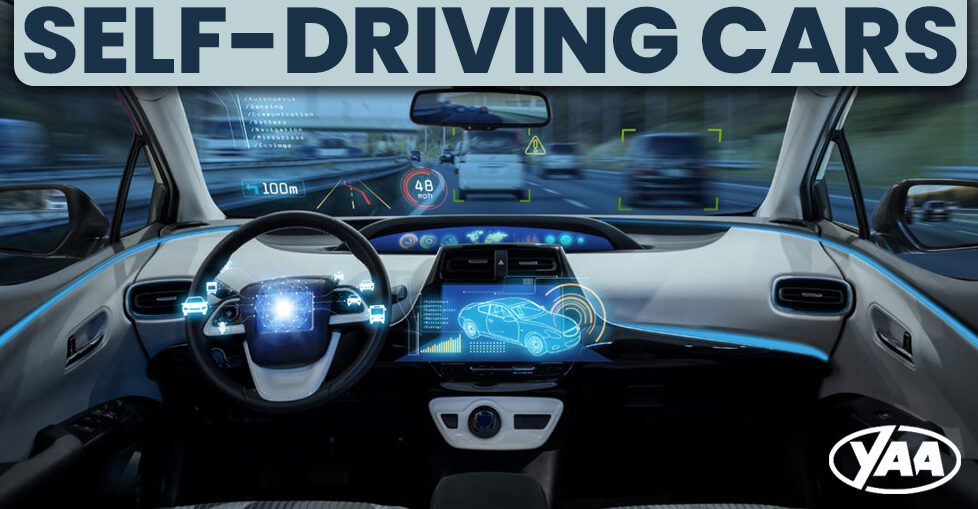
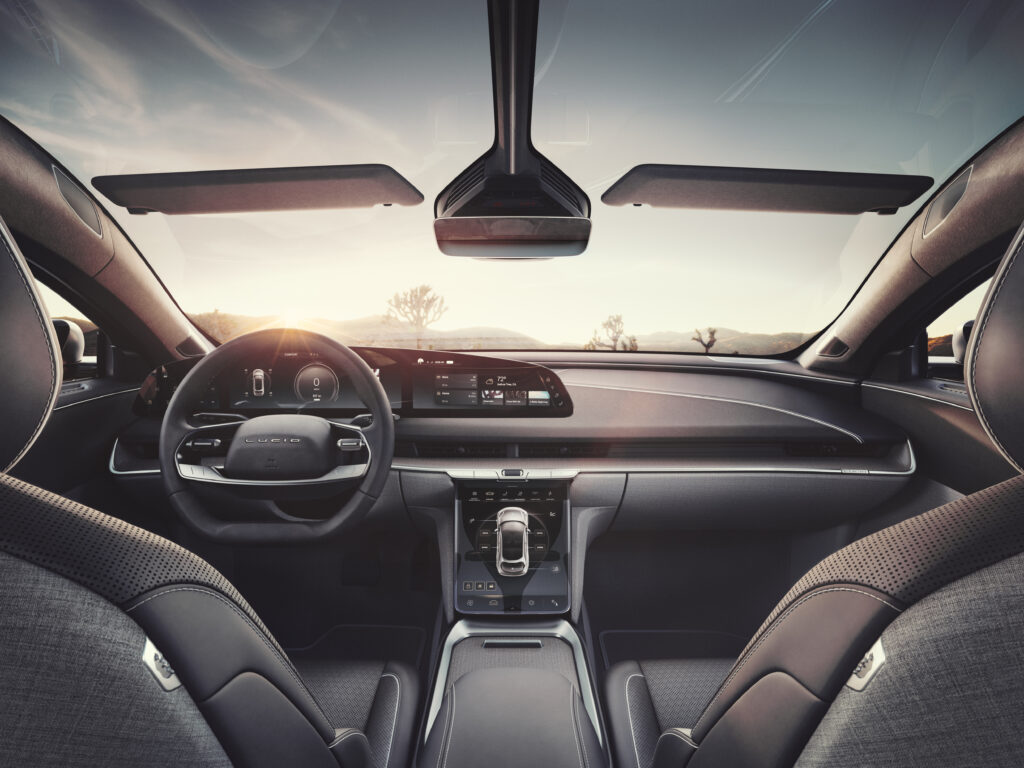
What does 2022 have in common with the 1939 World’s Fair? It’s the feeling that autonomous vehicles are right around the corner. Nearly every automaker, from Tesla to Ford, has overpromised and underdelivered on their plans for autonomous driving. Tesla CEO Elon Musk said it himself recently in an interview with researcher Lex Fridman. “I thought the self-driving problem would be hard, but it’s harder than I thought. I thought it would be very hard, but it was even harder than that,” Musk reflected. He’s not the only one to misjudge the enormity of the task at hand. You’d think automakers would stop giving themselves deadlines that are destined for letdowns.
It turns out that there’s been one overarching theme in the learnings from the past decade of development. Engineers now see that in order for self-driving cars to be safe and successful, cars will have to learn to think like a human. Computers are exceedingly good at performing repetitive tasks. What they’re not great at is responding to unique situations full of unknowns. The human brain is more capable than some give it credit for. We’re very good at dealing with unknowns and making complex decisions on the fly.
After reading this article, you’ll better understand what self driving cars are, the difference between self-driving cars and autonomous vehicles, and the terms and jargon associated with self-driving cars. Let’s dive in.
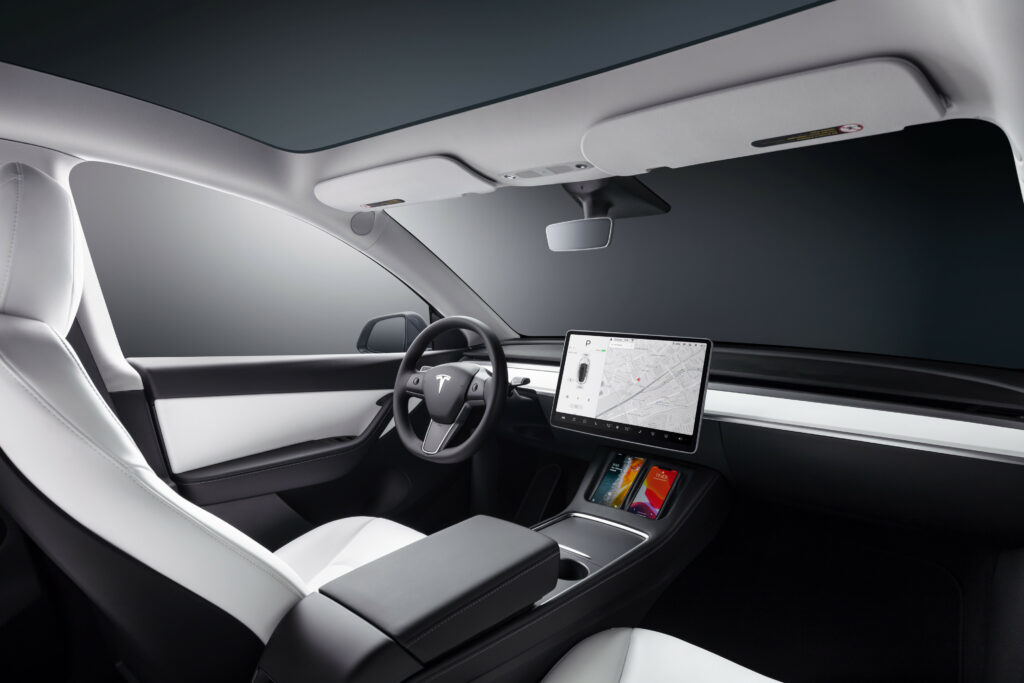
As you’re soon about to learn, the world of autonomous cars and self-driving technology is full of terms worth defining. For starters, what is self-driving in the world of transportation? Self-driving cars can drive in some or even all situations without driver input, but a human must always be ready to take control. Think of them as a crucial stepping stone on the path to full autonomy.
Self-driving cars are not fully autonomous. In the world of professional engineering, ‘automation’ is the preferred term for the sliding scale of vehicle operation status. In fact, the United States National Highway Traffic Safety Administration (NHTSA) refrains from using the term “self-driving” at all, and most engineers disagree with the use of the term. Let’s dive into the terms and definitions that relate to so-called self-driving cars, and the future of automation as a whole.
First, let’s clear the confusion. Talking about automated cars warrants a glossary of its own. Being well-informed is the key to knowledge, and we all know knowledge is power. Here’s a list of the terminology you’re likely to encounter in a self-driving world. In most cases, the difference is in the finest of details.
These are technological features designed to improve driving safety. These software-based systems improve a driver’s ability to react to adverse situations on the road. Examples include adaptive cruise control, forward collision warning and lane departure warning. ADAS features are very common in newer car models.
This term is thrown around a lot, but a true autonomous vehicle is capable of sensing its environment and operating without human involvement. Human passengers can take their eyes off the road and just enjoy the ride. Imagine entering the destination address, and that’s it. Autonomous vehicles can do everything that an attentive human driver can do.
Usually referring to Tesla Autopilot, which is a suite of ADAS features that enable the vehicle to steer within a lane and adjust speed in response to surrounding traffic. It’s essentially adaptive cruise control plus lane centering. Autopilot is standard on all new Tesla models.
Tesla “Full Self-Driving” in its current iteration is not much different from driver assistance technologies. Tesla enthusiasts, relax. That’s likely to change as Tesla updates the software regularly via over-the-air updates that simply require WiFi to install. Automotive engineers generally refrain from using this term altogether, as it’s more associated with marketing than with engineering automation. A true full self-driving car can navigate roads with human supervision. Tesla’s program is getting close, but as thousands of videos online will show you, Tesla FSD is not quite there yet. It is impressive though. Tesla FSD can be yours (someday) for an additional $12,000 when you buy a new Tesla vehicle.
This is when a vehicle’s operation is limited to a restricted geographic area. For example, Waymo’s driverless vehicles are geofenced to only operate in the Phoenix metropolitan area. Geofenced autonomous vehicles will grow in popularity before true, independent autonomous vehicles put rubber on public roads.
Light Detection and Ranging. LiDAR is the go-to ‘radar’ technology for nearly all self-driving innovators. Except of course for Tesla, who seems to think image processing with cameras is the way to go. LiDAR can ‘see’ through low visibility conditions, including fog and heavy rain.
When a vehicle can perform most driving tasks in a geofenced area, but with constant human monitoring and intervention when needed, some in the automotive industry consider it to be self-driving. The degree of human input varies. More on that below…
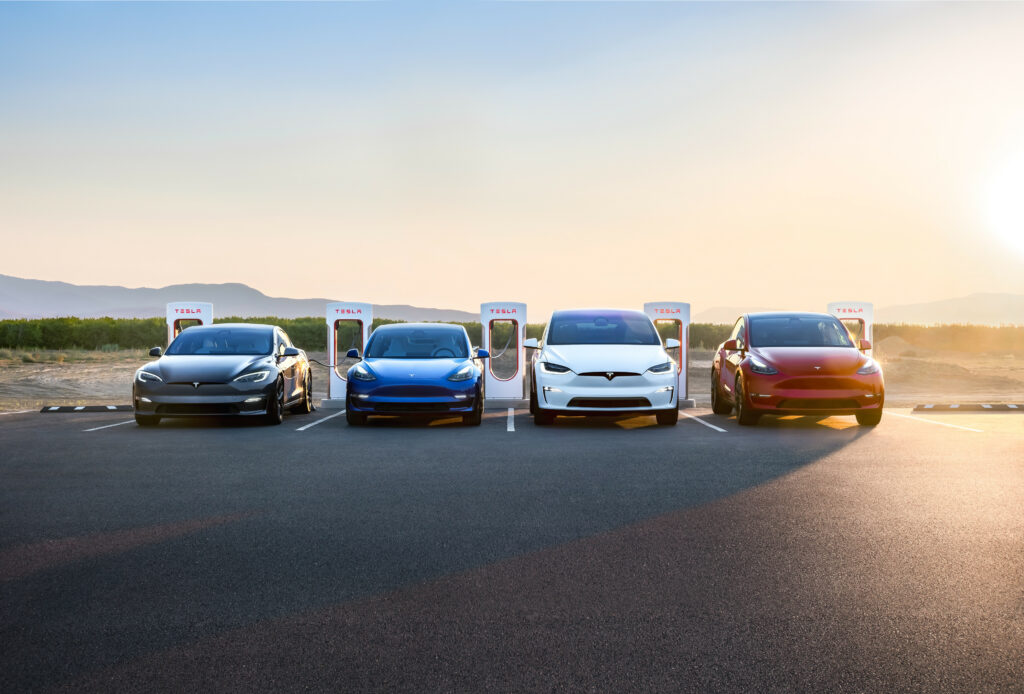
But wait, there’s more! Engineers rate the levels of automation based on how independently the system can perform tasks, and how much human input and supervision is required. Here are the basics of the five levels of automation, according to the Society of Automotive Engineers.
Now that we’ve covered the engineering and industry jargon, let’s revisit our definition.
What exactly is self-driving technology? The most agreeable definition is that self-driving cars fall within level 3 or level 4 automation, in which the vehicle can perform most driving tasks in a geofenced area, but with constant human monitoring and intervention when needed. Fully autonomous vehicles fall within the ultimate frontier of automotive engineering, Level 5. A true autonomous vehicle can operate from start to finish without driver input or attention. Imagine reading a book or taking a nap on your way to work.
No cars on today’s roads are capable of fully autonomous driving. Automated driving remains years away, however tremendous resources are committed to the cause of unraveling the ultimate challenge in automotive engineering. Tesla’s Autopilot and Full Self-Driving features are branded as Level 2 systems, which means that constant supervision is required, and intervention is to be expected. This discrepancy between the Level 2 classification of Tesla’s driver assistance systems and the names of the products remains the source of much controversy among engineers and driver safety advocates alike. Can’t we all agree that honest advertising is always in the interest of safety and responsibility?
Aside from automakers, there are dozens of other companies innovating in the autonomous driving space. Waymo, Argo AI and Cruise are all putting geofenced autonomous cars on the road today for real-world testing and limited customer use for ride-hailing. What is a self-driving car in 2022? It’s likely a prototype with limited use.
Tesla is the clear leader in advanced driver assistance systems. However, the extent of Tesla’s lead among industry competitors is not nearly as clear as it was a few years ago. Tesla has taken a bold step away from using radar for sensory inputs. The decision to remove LiDAR from new Tesla models starting in 2020 was so controversial that some senior engineers quit in protest.
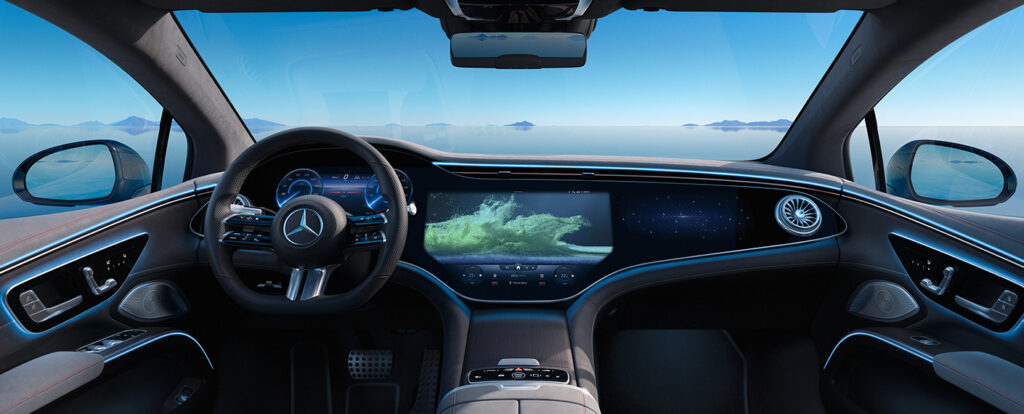
Remarkably, Tesla is no longer the only automaker breaking autonomy barriers. In 2021, Mercedes-Benz became the very first automaker to get regulatory approval for Level 3 autonomous driving on limited public roads. For now, Mercedes Drive Pilot is available on 8,197 miles of German highways at speeds up to 37 miles per hour. What makes Mercedes Drive Pilot so special is that it is the first approved consumer-ready system to permit the driver to take their attention away from the road while the vehicle is in motion. Even Tesla’s Full Self-Driving feature does not permit the driver to direct their attention elsewhere, despite evidence of the contrary on social media.
For the foreseeable future, American roads will see even more Level 2 driver assistance systems calculating their way through traffic as nearly every automaker in the market steps up their autonomy game. Level 3 remains in development, even for Tesla. Mercedes has not announced if it will seek approval in the US anytime soon, likely due to the murky regulatory environment.
Fully automated driving is likely in our future, but no one knows when it will be safe and accessible to all. The pace of innovation ebbs and flows. Engineers, regulatory agencies and insurance companies have some hard problems to solve. For now, proceed with caution when at the wheel of a “self-driving” vehicle. Their arrival is a great reason to look twice when crossing the street. You never know who (or what) might be coming around the corner.
CarEdge Just Launched a New Search Engine to Make Buying Your Next Car Easier!
We have thousands of vehicles listed today. Each listing includes industry insights, empowering data and the true TotalPrice that will make buying a car the transparent process it should’ve always been. We show you what dealers don’t want you to know. We believe that data can be your superpower when buying a car. Check it out here!
Notifications